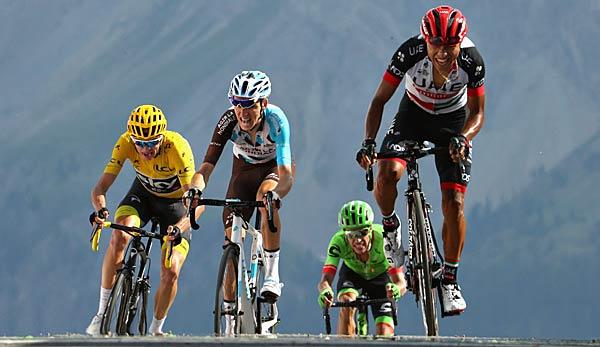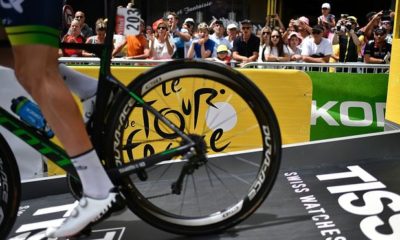During the Tour de France the riders wear different jerseys. Yellow, green, white or with red dots: We’ll explain what the jerseys are all about. In addition there is information about the team ranking, the mode of the most militant driver and the overviews of the points distribution.
The leader of the overall standings wears the yellow jersey. All the times of the individual stages of the Tour de France are added together.
In the event of a tie, the tenths of a second from the individual time trials first decide, followed by the addition of the stage positions and finally the position in the final stage.
Points are awarded for all intermediate sprints and finishes. The leader in this classification wears the green jersey.
If the points are equal, the number of stage wins first, then the intermediate sprints won and finally the overall ranking.
The point distribution:
Intermediate sprints are held on all sections of the day except time trials. At the Tour de France there is only one intermediate sprint per stage. There 15 drivers are considered, namely with 20, 17, 15, 13, 11, 10, 9, 8, 7, 6, 5, 4, 3, 2, 1 point.
This year’s tour has a total of 53 climbs to offer. Depending on the difficulty, a different number of points is awarded. The summits are divided into five categories. The leader in the mountain classification wears the white jersey with the red dots.
If there is an equal number of points in the climbing classification, the number of victories in the HC (highest difficulty) first decides, then the number of victories in the mountain classification of the 1st category, etc.
A special feature is that this year the points on the last two climbs of the Pyrenees stages will be doubled, i.e. the Col du Portillon (16th stage) and finally the Col d’Aubisque (19th stage).
The best young rider of the tour wears the white jersey. This ranking includes all riders born after January 1, 1993.
The team ranking results from the addition of the times of the three best drivers of each team on the tour. In the team time trial, however, the time of the fourth driver is decisive.
In the daily standings of the team classification, in the event of a tie, the addition of the stage places of the three best-placed drivers is decisive.
In the event of an equal time in the overall standings, the number of stage victories in the team classification first decides, followed by the number of second places in this classification.
As a reward for special dedication, the corresponding driver may wear a red start number. After each stage, a jury selects the rider who may wear the award the next day. At the end of the tour the jury will choose an overall winner. The award will not be given for the final stage and the two time trials.
If a rider leads in several classifications, the yellow jersey has priority. In the other ranking, the runner-up will wear the corresponding jersey.
The current world champion, Peter Sagan from Slovakia, is wearing the rainbow jersey this year.
The peloton also features a number of other new national champions in the colours of their nation. In the time trial, the respective title holders wear the national jersey, otherwise the road race champions.



















You must be logged in to post a comment Login